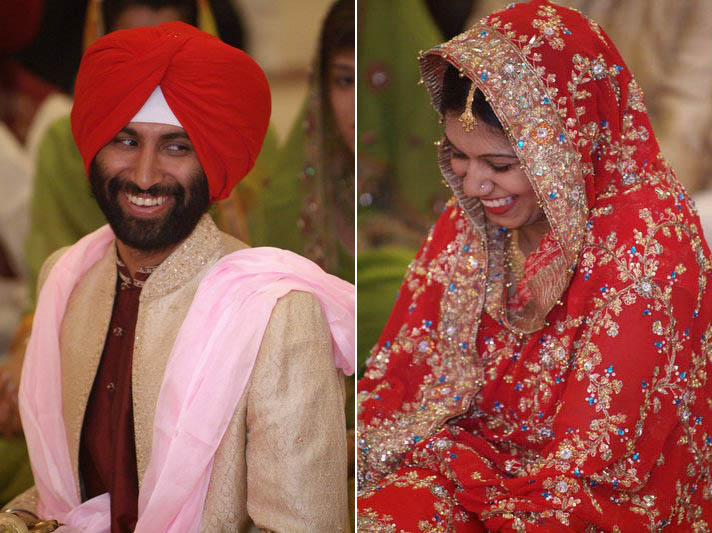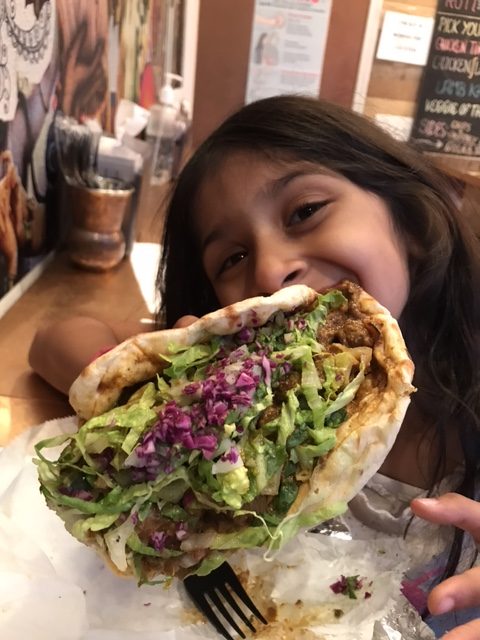For our first official post, we thought what better way to start things off than with a photo from our Big, Fat, Desi wedding! We’d like to tell you the significance of what we’re doing in this photo, but the truth is none of us know. It’s such a fun photo though, especially Sona’s dad off on the side, smiling away.
We had the Sikh ceremony in the morning, where we knew what was going on, and assumed Sona’s family understood what was happening during the Hindu ceremony. It turns out, nobody understood the ceremony because it was in a language nobody in attendance spoke: Gujarati. And there were cultural aspects of the wedding ceremony only found in Gujarati weddings, like women whispering wedding night secrets to Sona, or having a screen between our families until the marriage was official. When me and my parents found out we weren’t the only ones completely clueless, we thought it was hilarious.
Deepu Mamaji (Sona’s maternal uncle), who lives down the street from Sona’s parents in New Jersey had booked the pundit, and joked later he’d gotten a discount because he only spoke Gujarati.
The wedding went down just like a good ole fashioned Indian wedding should: plenty of dramebaazi, drunk ass people making drunk ass speeches, a horse, baraat, dhol, vigorous bhangra-ing. But at its heart was me and Sona becoming one.
Since I don’t actually know what happened during the Hindu ceremony, here’s a lovely translation of a quote from the Guru Granth Sahib, the central religious text for Sikhs: “They are not said to be husband and wife, who merely sit together. Rather they alone are called husband and wife, who have one soul in two bodies.” (Guru Amar Das, Pauri, page 788)
In fact, here’s a photo from our Sikh ceremony, which was the second time we got married. (Sona’s Editor’s Note: After Vegas, more than a year earlier—at the same chapel as Britney!!)

Many of the Sikh wedding ceremonies I’ve attended in California are quite somber affairs, the bride and groom rarely looking at each other, and a general mood of seriousness. Like an academic conference. I’ve always found this rather confusing, since the Sikh ceremony is called the Anand Karaj, which literally means blissful or joyful union. The poetry of the banis and shabads reflect this joy, seamlessly alongside the profoundness of the union. As you can tell from this photo, me and Sona were quite happy!
During the Anand Karaj, four specific banis are recited during each lavan (or marriage round), which reflect the spiritual path of the union, with the final lavan ending as everything in life should: eternal love.
We were sitting down after the second lavan, which signifies the love and yearning between the couple (that’s us!), and the Granthi offered his interpretation of the bani he’d just recited. He instructed us to look at each other and talked about how the bani was about recognizing the unique qualities in your partner. As I look at Sona with much profoundness and the seriousness of our commitment to each other, she’s staring at me, smiling like a lunatic, ecstatic she gets to look at me, rather than the floor. That’s right, I am a better option than the floor. Before we continue to the third and fourth lavan, I think to myself: there is nobody I would rather be with.





[…] months, we were a done deal, racking up frequent flyer miles monthly. And we were so smitten, we got married three times for good measure. We wed for the first time first time at the Hollywood Wedding Chapel during a […]